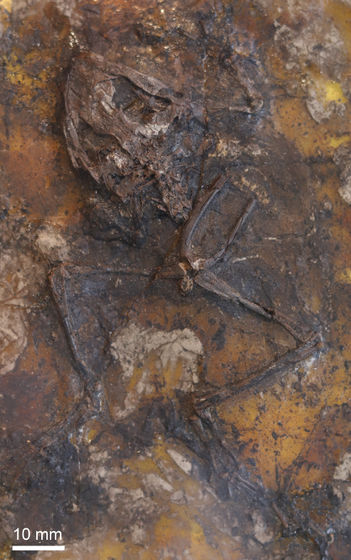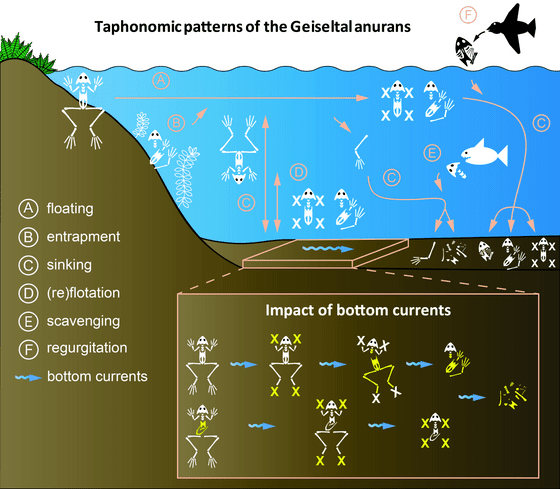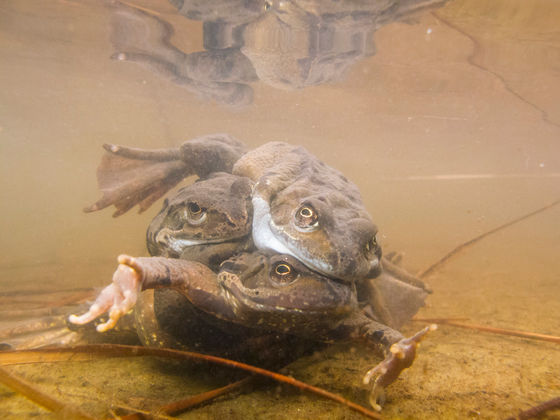It turns out that ancient frogs were exhausted and died in large numbers due to ``too intense copulation''

The cause of death of the ancient frogs, which were excavated in splendidly preserved fossils from the stratum of 45 million years ago, but why they died in large numbers at about the same time is a mystery. It was reported that the results of the study revealed that
The skeletal taphonomy of anurans from the Eocene Geiseltal Konservat‐Lagerstätte, Germany: insights into the controls on fossil anuran preservation - Falk - 2022 - Papers in Palaeontology - Wiley Online Library
Ancient frogs in mass grave died from too much sex – new research
https://theconversation.com/ancient-frogs-in-mass-grave-died-from-too-much-sex-new-research-188562
According to Daniel Falk, who studies paleontology at University College Cork in Ireland, the Geiseltal region in central Germany was a waterfront of a vast wetland 45 million years ago. For this reason, more than 50,000 fossils of a wide variety of ancient creatures such as birds, horses, bats, and fish have been found in this area so far. .
Among them, Mr. Falk's eyes were particularly caught by hundreds of frog fossils.

by D. Falk
Most of these fossils show no signs of disease and show no signs of being eaten by predators or being devoured by scavengers. Also, since there is no evidence that the frogs were swept away by the flood or died when the swamp dried up, it was unknown for many years why the countless frogs died.
Therefore, the research team of Mr. Falk et al. conducted a survey focusing on the skeleton of the fossil and analyzed which bones and which joints remained. As a result, it was confirmed that most of the fossilized frogs were due to the mass death phenomenon and died almost simultaneously due to the same cause.
In addition, it was found that the frog was floating in a dead state for a while before becoming a fossil, denying the hypothesis that ``the lake dried up'' and went up to land and moved to another water area. The hypothesis that ``the oxygen concentration in the water may have decreased'' does not apply because the frog is a species that can also move around.

As a result of the research team excluding various possibilities in this way, the last thing left was ``dead due to too much copulation''. According to Mr. Falk, fossil frogs are similar in skeleton to modern toads. Toads live mostly on land, but have the habit of entering water only during breeding.
In mating toads, many individuals drown due to exhaustion, and the risk of drowning increases when multiple males crowd one female. Also, some species that live in the tropics try to mate as many times as possible in a short mating period of only a few hours, so even today, a large number of frogs die near ponds or in the water, creating mass graves. That's what I'm talking about. The research team believes that a large number of frogs that died in the swamp 45 million years ago may have lost their lives in this way.

by Stephen Lloyd-Smart
Massive deaths from over-mating are a bit silly, but human-induced water pollution and habitat destruction are far more common causes of death among frogs today than mating. In the early 2000s, an open pit mine in the Geiseltal region, where many valuable materials, including the fossils used in this research, were unearthed was also submerged in the early 2000s to create an artificial lake for recreation.
Falk concludes, 'From time immemorial, feeding next to tyrannosaurs, frogs have survived several mass extinctions and climate change, adapting everywhere from trees and flowers to jungles and deserts. However, although they have evolved in a wide variety of ways, from rainbow-colored species to flying species, they are vulnerable to diseases caused by human influence, etc. It would be a tragedy to lose more species. '' he complained.
Related Posts:







